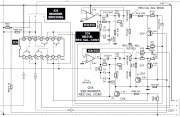Thread title is probably not clear but I'll try to explain what I mean 
Under the process of calibration, oscillator (or however it is called) is sending a two signals to a recording head. The one is for level adjustment (315 or 400Hz) and the other is for bias adjustment (8 or 10kHz probably). We all know that part so no rocket science.
There are some details I don't understand/know:
1. What is a level of those signals? -20db? 0db?
2. Can it be manipulated, for example, if it is -20, could it be adjusted to -18 instead? Does it affects calibration itself? I know it sounds weird but there is a reason why I need to do that.
3. If answer on a 2nd question is yes is there anybody who know how to do that (I'll attach here a pictures of oscillator scheme)
Under the process of calibration, oscillator (or however it is called) is sending a two signals to a recording head. The one is for level adjustment (315 or 400Hz) and the other is for bias adjustment (8 or 10kHz probably). We all know that part so no rocket science.
There are some details I don't understand/know:
1. What is a level of those signals? -20db? 0db?
2. Can it be manipulated, for example, if it is -20, could it be adjusted to -18 instead? Does it affects calibration itself? I know it sounds weird but there is a reason why I need to do that.
3. If answer on a 2nd question is yes is there anybody who know how to do that (I'll attach here a pictures of oscillator scheme)



